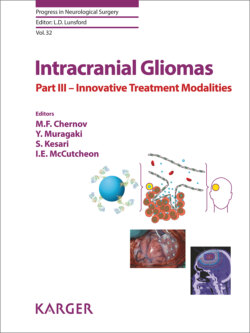Читать книгу Intracranial Gliomas Part III - Innovative Treatment Modalities - Группа авторов - Страница 65
Cavitation
ОглавлениеAn important non-thermal mechanism by which ultrasound can induce biological effects is cavitation. Acoustic cavitation refers generally to the interaction between sound waves and bubbles in liquids. Inertial cavitation takes place at high pressure amplitudes in the form of bubble formation and collapse; the latter results in high temperatures, and the formation of shock waves, fluid jets and turbulent flow [11]. The high temperatures and pressures may also result in the formation of free radicals, which may go on to further interact with (or ultimately damage) tissues. In comparison, stable cavitation results in stable oscillation of bubbles, with microstreaming and shear stresses in the surrounding liquid [12]. The introduction of preformed microbubbles, such as commercial ultrasound contrast agents, reduces the cavitation threshold by more than an order of magnitude. Ultrasound contrast agents allow a greater temperature to be realized at the focus when thermal ablation is intended [13], and were first combined with low-power focused ultrasound to achieve reproducible BBB disruption [14].
Cavitation has a number of potential applications in the treatment of brain tumors, some of which have been investigated in preclinical studies. Cavitation increases the volume of coagulation at the focus, which could potentially shorten treatment times for larger neoplasms [13] and reduce transmission beyond the focus, protecting non-target tissues [15]. It also decreases the threshold for thermal tissue damage, and decreases the power required for a given treatment [15]. In soft tissues, inertial cavitation may cause complete disintegration of tissue at the focus with a resultant debris- or fluid-filled cavity [16, 17]. The shear stresses generated during stable cavitation are thought to be in part responsible for the increased permeability of cell walls and blood vessels seen experimentally. This has led to extensive research into BBB disruption using timed intravenous injections of ultrasound contrast agents in conjunction with ultrasound application. Paired with MRI-guidance, this technique allows reversible, focal BBB disruption and delivery of therapeutic agents, including drugs, antibodies, and even cells, that would otherwise have limited or no effect on the tumor and surrounding brain [18–20].
One of the main challenges of harnessing cavitation for therapeutic ultrasound, in addition to the variability of the cavitation threshold in living tissue, is that the effects are not always seen at the focus, and may occur along the beam path, particularly at interfaces [15]. Still there is no satisfactory cavitation mapping to guide clinical application, although feedback algorithms (as in the ExAblate 4000 by Insightec, Ltd.; Haifa, Israel) may be feasible to moderate therapy, where cavitation is desired, or terminate it, where cavitation should be avoided.
